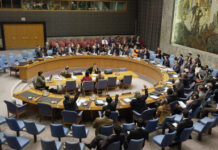Photo credit: DiasporaEngager (www.DiasporaEngager.com).
National donor-advised fund sponsors — particularly those affiliated with for-profit wealth management firms — often claim that they “democratize giving” by making foundation-style grantmaking available to a wider range of donors.
But by blending their numbers with those of pass-through organizations like workplace giving funds and mass donation processors, they are making themselves look more egalitarian than they actually are.
Until we demand that donor-advised fund sponsors meet clear reporting and transparency requirements, they will continue to cherry-pick data to put themselves in an artificially positive light.
DAFs of different stripes
Donor-advised funds, or DAFs, essentially serve as miniature private foundations. Donors give money to a personal DAF account and can take an immediate tax deduction for that gift, since a DAF is technically a public charity.
The organization managing the DAF then gives the donors advisory privileges to recommend grants out of the DAF to whichever qualified charities they want, on whatever schedule they want.
DAFs are attractive to wealthy donors who want to get big tax deductions for charitable gifts — especially donors who want to offload appreciated complex assets like real estate and cryptocurrency without having to pay capital gains taxes on them.
And since there is no payout requirement for DAFs, the money can legally sit in them forever. As a result, the organizations managing DAFs, which are known as sponsors, are getting bigger, and bigger, and bigger.
But DAF sponsors come in different flavors. Some — including the country’s very largest — are nonprofit arms of commercial wealth management firms (like Fidelity or Schwab); some are workplace giving or donation processors, and some are community foundations or working charities.
The first two of these types of sponsors are very different, but are often lumped together in analyses of DAFs.
The sponsors affiliated with wealth managers typically market themselves to extremely wealthy people, often existing clients. Their DAF accounts are enormous, they are able to take in multi-million or even billion-dollar contributions at a pop, and the money can often take a very, very long time to flow out to working charities.
Workplace giving and donation processors, on the other hand, tend to take in very large numbers of modest contributions from everyday donors. They mainly serve as pass-through conduits, funneling the money relatively quickly back out to working charities.
DAFs are growing fast, then, not only because traditional national, community foundation, and single-issue sponsors have helped make them the preferred giving vehicle for wealthy donors, but also because technology firms are using them for mass donation processing.
Why commercial DAF sponsors would want to associate with donation processors
U.S. taxpayers pay for the charitable deductions that wealthy donors take for their gifts to DAFs in the form of lost tax revenue. But when these gifts languish in a DAF for years, or even forever, taxpayers get nothing back for this subsidy.
As taxpayers learn more about how DAFs work, they are starting to demand that DAF donors fulfill their end of the charitable bargain, and pay the money back out to working charities with all deliberate speed.
But some DAF sponsors, especially those affiliated with commercial wealth managers, have a lot invested — literally — in the status quo. So they use every opportunity to present DAFs as a benign tool accessible to a broad range of donors.
One way to do this is to pool their asset, grant, and account numbers with those of the genuinely more representative workplace giving sponsors and donation processors, and to report only on average account sizes and grant payout rates for this entire group of “national” DAFs.
By diluting their measures this way, big national sponsors are able to make themselves look more “democratic” than they really are.
The numbers — diluted
The annual DAF Report from the National Philanthropic Trust, or NPT, is a case in point. Analysts and journalists depend on this report for annual data on the country’s donor-advised funds.
The NPT report breaks down DAF sponsors into three types: national, community foundation, and single-issue (which may include working charities).
In 2022, national sponsors looked relatively good compared to the other types. They had an average account size of $86,194 (compared to an overall DAF average of $117,466), and paid out their grants at an average rate of 23.2 percent of their prior year assets (compared to a rate of 22.5 percent for DAFs overall).
The report highlighted the fact that the roughly $86,000 average national DAF account was well below the $547,648 average account at community foundation DAFs, pointing out that the average community foundation DAF account “is almost double that of Single-Issue Charities and nearly six times greater than the average DAF account size at National Charities.”
The implication is that community foundation DAFs, with their huge accounts, are used more by wealthy donors, while national DAFs, with their smaller accounts, are more democratic.
But are they really? The NPT has not responded to IPS requests to reveal which sponsors they analyze in their report or which categories those sponsors fall into.
The NPT’s analysis does include workplace giving sponsors, but we don’t know whether it includes donation processors. If it does, however, both of these types of pass-through sponsors would almost assuredly be falling into the national category. And both would dilute the averages for the rest of the national DAFs.
We wondered what the numbers would look like if we could separate the pass-throughs from the nationals and look at each by itself.
Source of original article: Institute for Policy Studies (ips-dc.org).
The content of this article does not necessarily reflect the views or opinion of Global Diaspora News (www.GlobalDiasporaNews.com).
To submit your press release: (https://www.GlobalDiasporaNews.com/pr).
To advertise on Global Diaspora News: (www.GlobalDiasporaNews.com/ads).
Sign up to Global Diaspora News newsletter (https://www.GlobalDiasporaNews.com/newsletter/) to start receiving updates and opportunities directly in your email inbox for free.






























